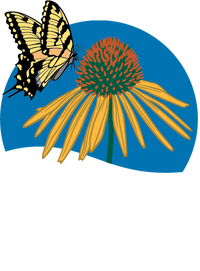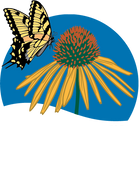



Solidago sphacelata 'Golden Fleece' - autumn goldenrod



DESCRIPTION
autumn goldenrod
Solidago sphacelata 'Golden Fleece'
Semi-evergreen heart-shaped leaves create a clean low growing groundcover that provides a backdrop for a stunning show of golden flower sprays. Starting in August flowers attract bees and butterflies with their sweet nectar. Hairstreaks, sulfur, and skippers are particularly attracted to Goldenrod.
Benefits
- Golden flowers bloom from late summer to late fall
- Makes an excellent groundcover
- Hairstreaks, sulfur, and skippers are particularly attracted to goldenrod
- Important food source for Monarchs on their fall migration
- Not particularly attractive to deer
NATIVE INFO
Native Range
The open woods, fields and prairies sand from Massachusetts south to Georgia and west to Minnesota and Texas.

Native range derived from The Biota of North America
INTERESTING FACTS
Interesting Honey Bee Facts: Honeybees visit about 2 million flowers to make 1 pound of honey. Eight pounds of honey is eaten by bees to produce 1 pound of beeswax. The average hive temperature is 93.5 degrees. The queen bee will lay 5-6 eggs per minute.
GROWING TIPS
Golden Fleece Autumn Goldenrod is native to calcarous woodlands and rocky pastures from Virginia to Illinois south to Kentucky and Georgia. Prefers somewhat fertile, sandy, well-drained soils in fullsun. Propagate by seed or division every 3-4 years. Cut back to encourage rebloom. Used in butterfly and wild gardens or as a groundcover or border perennial.
Mature Size: 18-21" Tall x 24-36" Wide
Hardiness Zone: 4-9
Sun Exposure: Full Sun
VIDEO
Coming Soon!
American Beauties Offer Solution Based Plant Collections to Help you Choose
Quick Tips for Choosing Plants:
- Planting a variety of native trees, shrubs, perennials and vines increases biodiversity and gives wildlife a source for food, cover and nesting
- Choose a mixture of deciduous and evergreen trees so birds and other wildlife will always be able to find shelter
- Plant trees and large shrubs where they will block winter winds from the house and shade it in summer, that will save energy and lower your carbon footprint
- Try your best to buy plants that were grown locally, your independent garden center will be your best bet
- Think about ultimate height and width of the plant you choose, make sure it will fit the space you have for it when it's reached maturity
- Plant nectar plants in groups, to attract butterflies and other beneficial insects more easily
- Ask for help if you need it. Most garden centers either have a landscape designer on staff or they can give you a reference of a designer that is adept at native plant wildlife gardening. There will be upfront costs but they are small when compared to having to redo a landscape that wasn't what you really wanted
Our Plant Tags Hold the Secrets to Success
Choosing the right plants for your garden can seem like a daunting task but we’re here to help. Our horticulturists have spent a considerable amount of time researching and writing our beautiful, American Beauties plant tags to help you be successful. First of all, when you see an American Beauties branded pot at your garden center you can be confident that the plant is native to your area and a responsible choice.
When you look at our tag you’ll find information about the plants natural habitat. That will give you a clue to how it will work in your backyard. For instance if the plant is naturally founded and moist, shade and you have full sun, it’s not the plant for you. The “Features” section gives you an overview or plant description so you’ll know what to expect. While the “Benefits” section talks about the plants strong suits and how the plant will benefit wildlife.
A Special Note About Exposure
Full sun: Prefers six or more hours of direct sunshine a day
Partial shade: Thrives in three to six hours of daily sunshine
Shade: Generally does well with less than three hours of sun per day. Having said that even shade loving plants will struggle in extremely deep shade.
DOWNLOADABLE RESOURCES
Best Plants for Bees - Double sided printout for download
Best Plants for Butterflies - Double sided printout for download



